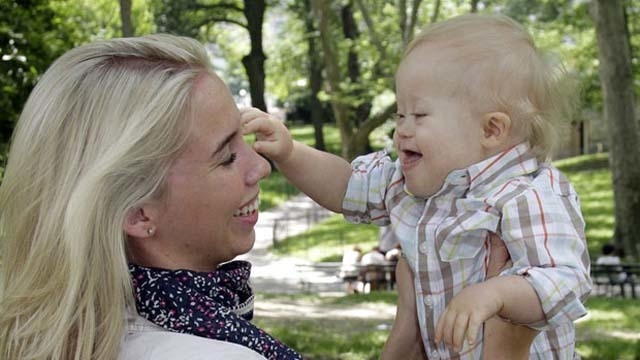Scientists: Gene found in Down syndrome may lead to new treatments

NEW YORK — Scientists have identified a gene on the extra chromosome causing Down syndrome that may be responsible for the early aging and cognitive defects in people with the condition, a finding that could lead to new treatments.
The gene, called Usp16, may hinder the body’s ability to make stem cells needed to maintain tissues and organs, according to research published Wednesday in the journal Nature. That includes development of organs such as the brain while in the uterus, said Michael Clarke, a senior study author.
The findings in mice and human cells are the first to help explain why people with Down syndrome show signs of early Alzheimer’s disease and age faster, the authors said. Further investigation may test whether the gene might slow down these aging effects or fight against other diseases like Alzheimer’s and cancer, Clarke said.
“Like most regulators and stem cell functions, understanding how those things work has potential implications in a wide range of diseases,” Clarke, a professor of medicine at Stanford University near Palo Alto, Calif., said in a telephone interview. “Now that we have a pathway, there might be drugs that could be used to improve some of the problems.”
People with Down syndrome have three copies of chromosome 21 rather than the standard two. Usp16 is on all three copies. The extra copy of chromosome 21 and the Usp16 gene may speed up the rate that stem cells are used during early development, exhausting the stem cell pools needed to regenerate tissues as adults, Craig Garner, a professor of psychiatry and behavioral sciences at Stanford and a study author, said in a statement. This could make the brains of those with the condition age faster and increase cognitive deficits, he said.
About 400,000 people in the United States have Down syndrome and about 6,000 babies are born in the U.S. each year with the disorder, according to the National Down Syndrome Society.
Physical issues that accompany Down syndrome include heart defects, stomach trouble, hearing difficulties and a higher likelihood of childhood leukemia. Alzheimer’s disease is also common among patients with the disorder. It is estimated that more than 75 percent of those ages 65 and older with Down syndrome have Alzheimer’s, six times as many as those in the age group without Down syndrome, according to the Alzheimer’s Association.
In the study, the tests in human cells also showed that an excess of Usp16 in people without Down syndrome caused skin cells to grow more slowly, while reducing Usp16 in skin and nerve cells in people with Down syndrome allowed the cells to have normal growth patterns rather than to regenerate slowly, the authors said.
“This gene is clearly regulating processes that are central to aging in mice and humans,” Clarke said. “Reducing Usp16 expression gives an unambiguous rescue at the stem cell level. The fact that it’s also involved in this human disorder highlights how critical stems cells are to our well-being.”












